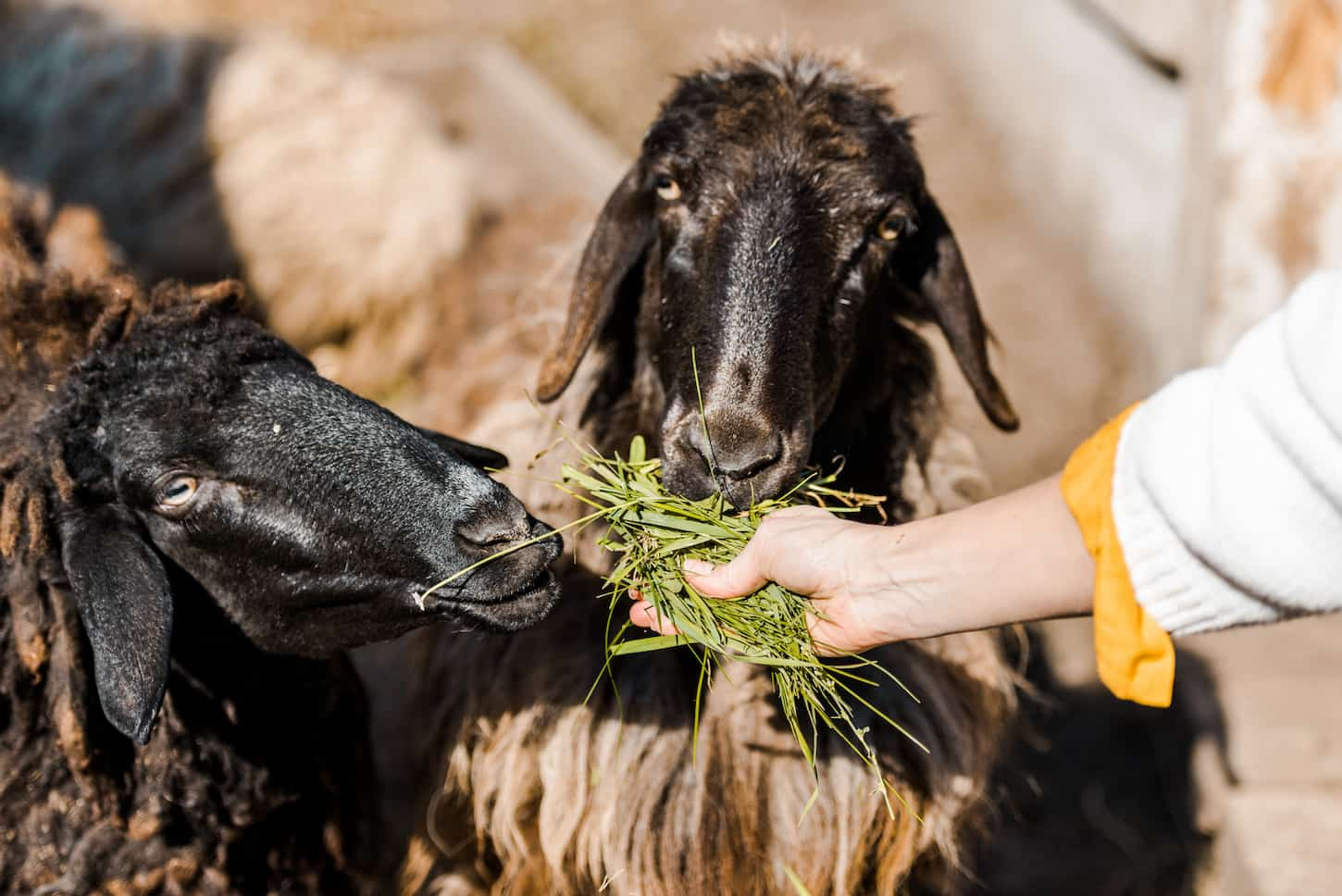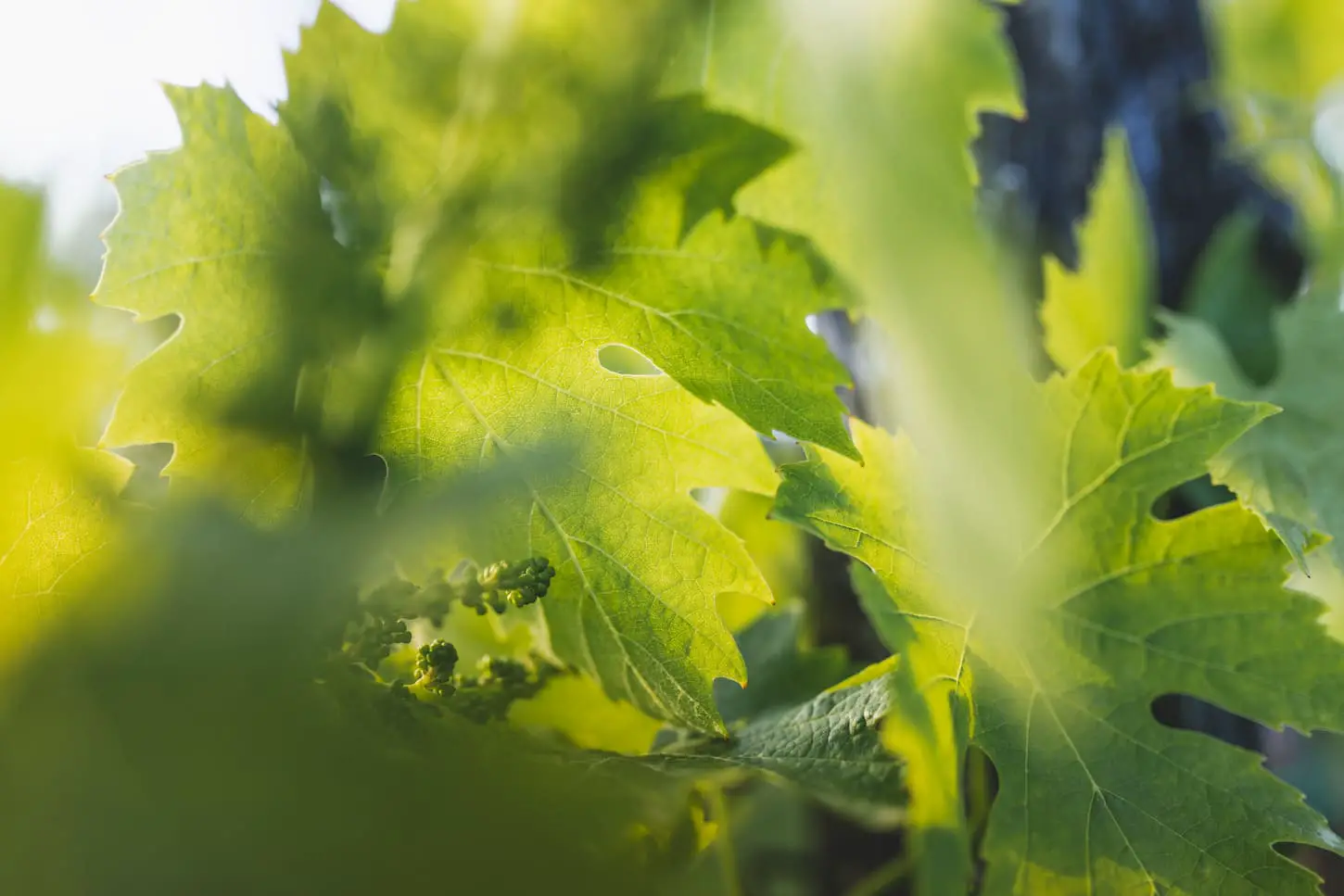It’s no secret that sheep enjoy their feed of seeds, grass, and plants. As herbivores, it’s only natural that you’d want to make sure your sheep are eating things that are good for them. With an abundance of kudzu growing all around the country, it’s best to make sure that this particular plant is suitable for sheep to consume.
Sheep can eat kudzu safely. Despite being pickier eaters than most cows and goats, sheep tend to like eating kudzu. While kudzu is rich in nutrients and protein composition, sheep should eat kudzu in moderation instead of as a complete diet replacement.
If you have kudzu growing nearby, you may consider letting your sheep feed on them. Keep in mind that it’s always best to seek veterinary advice when it comes to your livestock’s diet. For more information about kudzu and its relationship to sheep, read below.

What is Kudzu?
While kudzu is a pest due to its aggressive growth, it’s also cheap forage for livestock. The plant is of good value for grazing animals, including sheep. As it’s a part of the legume family, kudzu hosts nitrogen-fixing bacteria, which not only enriches soil but makes it a good source of nutrients for herbivorous animals.
Kudzu is a plant native to Japan and southeast China, which was first brought to the U.S. in 1876 where it was sold for its sweet-scented blooms and strong vines. It quickly became popular among Southern U.S. farmers due to its versatile uses. Originally praised for its great soil erosion control benefits, it became known that kudzu can grow out of control and overtake and grow over anything in its way.
This unique plant is a trifoliate-leaved, semi-woody, trailing, or climbing perennial vine, which can grow up to 60 feet in a single season, making it a challenging plant to tame). It even tends to smother other plants and hogs the sunlight, leaving other plants to lie in its shade.
Albeit an invasive plant, kudzu growth can be effectively controlled by livestock feeding on the plant.
Do Sheep Eat Kudzu?
Almost all grazing animals can eat kudzu, including sheep. Sheep and goats are the primary grazers on kudzu. Some studies have shown that sheep prefer kudzu over grasses or commercial hay when given the choice.
While most parts of the plant are edible, different animals have different preferences. For instance, grazing animals like goats and sheep tend to eat the broad leaves, while pigs go for the roots.
Kudzu is a valuable source of nutrition and is considered attractive due to its high-quality crude protein and digestible nutrient content for some animals.
According to a Purdue University publication, continuous mowing and grazing of cattle will weaken and eventually control the plant (source).
Despite the benefits of having livestock feed on kudzu, it isn’t a major staple of their diet, as kudzu is difficult to bale compared to hay.
If you’re new to feeding your livestock kudzu, it’s best to supervise them as they may feed on the inedible seed pods and vines of the plant. It’s vital to exercise caution when first introducing kudzu to your sheep’s diet and to seek professional advice before making alterations to their dietary habits.
If you ever notice any changes to your herd’s health, please call your veterinarian immediately.
Is Kudzu Poisonous for Sheep?
Kudzu is not usually poisonous to sheep unless it’s been treated with chemicals or has other plants (known to be toxic to sheep) growing with its vines.
Toxicity has not been reported in livestock that has fed on kudzu. However, ingestion of kudzu vines may induce vomiting and bowel dysfunction.
Before feeding your sheep kudzu, there are certain things to consider about the quality of the plant.
- Exposure to chemicals. Try to avoid feeding your livestock kudzu that has grown in industrial areas, which are susceptible to chemical or toxic waste exposure.
- Grown near roads or highways. It’s best to stray away from kudzu that grows close to high-traffic areas, as the plant is likely to be exposed to excessive dust and automotive exhaust.
- Study and remember its appearance. Did you know kudzu looks dangerously similar to poison ivy? Both plants have three-leafed vines and share territorial overlaps. To differentiate between the two, remember that kudzu leaves are larger with rounded lobes and hairy undersides. Poison ivy has smaller, pointier leaves with smooth undersides.
- Wash thoroughly. It’s always best to wash the plant as best you can and strip it of its leaves before feeding it to your sheep.
If you can’t guarantee that the kudzu is safe, it’s best to avoid using it as a dietary supplement or snack for your herd.

What are the Benefits of Kudzu?
Kudzu provides numerous advantages when included in your sheep’s diet. Kudzu leaves have a very high nutritive value and are often favorably compared to alfalfa. They’re versatile enough for various consumption methods: grazed fresh, harvested for cut-and-carry feeding systems, and added to pre-cut grass for quality silage.
According to a study by the Biology Department of Jacksonville State University (source), the leaf part of the kudzu contains crude protein content at percentages as high as 24.46 percent. However, the whole plant, used as hay, typically has a crude protein content value between 15-20 percent and a total digestible nutrient value of up to 60 percent. High levels of protein concentrations and minerals like calcium can lead to enhanced animal productivity.
What are the Disadvantages of Kudzu?
Numerous advantages aside, there are significant constraints surrounding using kudzu as material for forage. Despite its seemingly rapid rate of growth, the amount of forage that can be yielded from kudzu is not impressively high. It is generally estimated that an acre of kudzu will yield about 2 to 4 tons of dry matter per year (source).
Like most legume forages, it is rich in protein. However, its high fiber content can be detrimental to animal feeding. Also, while forage quality varies with management and season, overall, the quality of kudzu decreases as the vine-to-leaf ratio increases.
Apart from yield issues, farm animals that consume a steady diet of unprocessed kudzu seem to have mixed results in studies. Some studies say that it results in healthier animals, while others say it can result in the animals losing weight or failing to produce as much milk.
So, it’s definitely a “take things slow and constantly evaluate how your animals are doing” kind of scenario.
However, because most sheep aren’t dairy animals, it’s probably safe to still feed them kudzu, just not as the main meal. Oh, and make sure you’re watching their wool quality and making adjustments as needed.
Other Uses for Kudzu
Kudzu is a nutritious source of food that can be consumed by both humans and livestock. Its leaves can be eaten raw, baked, cooked, and even deep-fried. Young kudzu shoots are said to be tender and taste similar to snow peas.
Kudzu’s purple flowers are also used to make jam, candy, syrup, quiche, pudding, wine, salsa, and honey thanks to their grape-like flavor. Its large tuberous roots are eaten boiled or dried and ground into powder which is used to coat foods before frying or to thicken sauces and even to bake cakes.
In addition to its multi-purpose cooking uses, kudzu is also used in traditional eastern medicine to treat alcohol addiction, liver damage, flu, and diabetes. Few of these claims have been clinically verified, although limited studies suggest that kudzu may possess anti-inflammatory properties.

Final Thoughts
While kudzu is a nutritious food source for sheep, it’s necessary to work with a balanced diet. It’s also necessary to follow precautions, particularly if you’re new to introducing the plant to your livestock. Kudzu should be fed in moderate amounts accompanied by other dietary supplements and feedstuff for the maintenance of healthy sheep.
So, as you feed kudzu to your sheep, know that a single sheep alone can’t control all that kudzu. It will definitely take a herd – or even multiple herds to keep it under control while keeping your animals healthy.
But to help you get going, I’ve got articles on which other animals can safely eat kudzu. Go ahead and give them a read at these links:
That way, you can keep your animals healthy, keep the kudzu under control, and enjoy your backyard homestead lifestyle.
Resources
Learning from your own experience is essential, but learning from others is also intelligent. These are the sources used in this article and our research to be more informed as homesteaders.
- “Kudzu in Alabama – History, Uses, and Control.” Alabama Cooperative Extension System, https://web.archive.org/web/20120616073734/http://www.aces.edu/pubs/docs/A/ANR-0065/
- “What animals eat kudzu.” Spokanetin, https://spokanetin.com/tag/094560-what-animals-eat-kudzu
- “A Review of Kudzu’s Use and Characteristics as Potential Feedstock.” MDPI, https://www.mdpi.com/2077-0472/9/10/220/htm
- “Kudzu: The Invasive Vine that Ate the South.” The Nature Conservancy, https://www.nature.org/en-us/about-us/where-we-work/united-states/indiana/stories-in-indiana/kudzu-invasive-species/
- “Kudzu Forage Quality Evaluation as an Animal Feed Source.” American Journal of Plant Sciences, https://file.scirp.org/Html/5-2602555_65158.htm
- “Did You Know You Can Eat Kudzu?” Kitchn,
https://www.thekitchn.com/did-you-know-you-can-eat-kudzu-92488 - “Kudzu.” Memorial Sloan Kettring Cancer Center, https://www.mskcc.org/cancer-care/integrative-medicine/herbs/kudzu
- Sellers, Peggy, et al. “Kudzu in Indiana.” Purdue University, Purdue University Extension, 1 Sept. 2005, ag.purdue.edu/btny/purdueweedscience/wp-content/uploads/2021/01/Kudzu-in-Indiana-WS-30.pdf.
